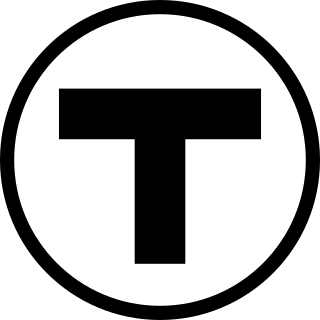
The Massachusetts Bay Transportation Authority is the public agency responsible for operating most public transportation services in Greater Boston, Massachusetts. Earlier modes of public transportation in Boston were independently owned and operated; many were first folded into a single agency with the formation of the Metropolitan Transit Authority (MTA) in 1947. The MTA was replaced in 1964 with the present-day MBTA, which was established as an individual department within the Commonwealth of Massachusetts before becoming a division of the Massachusetts Department of Transportation (MassDOT) in 2009.

The Toronto Transit Commission (TTC) is the public transport agency that operates bus, subway, streetcar, and paratransit services in Toronto, Peel Region and York Region in Southern Ontario, Canada. It is the oldest and largest of the urban transit service providers in the Greater Toronto Area, with numerous connections to systems serving its surrounding municipalities.
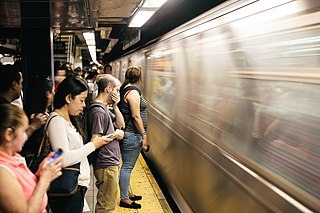
A rush hour or peak hour is a part of the day during which traffic congestion on roads and crowding on public transport is at its highest. Normally, this happens twice every weekday; once in the morning and once in the afternoon or evening, the times during which the most people commute. The term is often used for a period of peak congestion that may last for more than one hour.
York Region Transit (YRT) is the public transit operator in York Region, Ontario, Canada. Its headquarters are in Richmond Hill, at 50 High Tech Road.

Intermodal passenger transport, also called mixed-mode commuting, involves using two or more modes of transportation in a journey. Mixed-mode commuting is often used to combine the strengths of various transportation options. A major goal of modern intermodal passenger transport is to reduce dependence on the automobile as the major mode of ground transportation and increase use of public transport. To assist the traveller various intermodal journey planners such as Rome2rio and Google Transit have been devised to help travellers to plan and schedule their journey.
Various terms are used for passenger railway lines and equipment; the usage of these terms differs substantially between areas:

The transportation system of New York City is a network of complex infrastructural systems. New York City, being the most populous city in the United States, has a transportation system which includes one of the largest subway systems in the world; the world's first mechanically ventilated vehicular tunnel; and an aerial tramway. New York City is also home to an extensive bus system in each of the five boroughs; citywide and Staten Island ferry systems; and numerous yellow taxis and boro taxis throughout the city. Private cars are less used compared to other cities in the rest of the United States.

An intercity bus service or intercity coach service, also called a long-distance, express, over-the-road, commercial, long-haul, or highway bus or coach service, is a public transport service using coaches to carry passengers significant distances between different cities, towns, or other populated areas. Unlike a transit bus service, which has frequent stops throughout a city or town, an intercity bus service generally has a single stop at one location in or near a city, and travels long distances without stopping at all. Intercity bus services may be operated by government agencies or private industry, for profit and not for profit. Intercity coach travel can serve areas or countries with no train services, or may be set up to compete with trains by providing a more flexible or cheaper alternative.
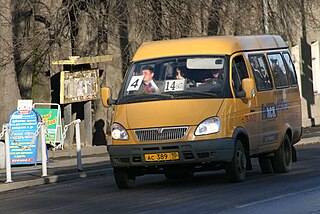
Marshrutka or routed taxicab, is a form of public transportation such as share taxi which originated in Soviet Russia and is still present in Russia and other countries of CIS, in Baltic states, Bulgaria, Georgia, Turkmenistan, Ukraine and Armenia. The role of the modern marshrutka is theoretically similar to the share taxi, which uses minibuses in some other countries. The first marshrutka was introduced in Moscow, Russia in 1938.

The Southern California Rapid Transit District was a public transportation agency established in 1964 to serve the Los Angeles metropolitan area. It was the successor to the original Los Angeles Metropolitan Transit Authority (MTA). California State Senator Thomas M. Rees sponsored the bill that created the RTD, which was meant to correct some deficiencies of the LAMTA, and took over all of the bus service operated by MTA on November 5, 1964. RTD was merged into the Los Angeles County Metropolitan Transportation Authority in 1993.
Accessibility for people with disabilities on the Toronto Transit Commission (TTC) system is incomplete but improving. Most of the Toronto subway system was built before wheelchair access was a requirement under the Ontarians with Disabilities Act (ODA). However, all subway stations built since 1996 are equipped with elevators, and elevators have been installed in 41 stations built before 1996. More than two-thirds of Toronto's subway stations are accessible. In 2014, the TTC began introducing new low-floor vehicles on its streetcar network. These accessible vehicles ultimately replaced the ageing, non-accessible Canadian and Articulated Light Rail Vehicle streetcars by December 29, 2019. In December 2015, the TTC retired the last of its lift-equipped high-floor buses, which were introduced in 1996, making all 170 bus routes 100% low-floor accessible.
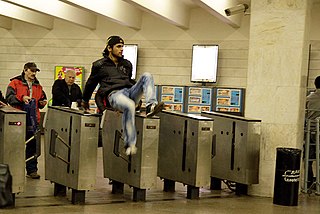
Fare evasion or fare dodging, fare violation, rarely called ticket evasion, is the act of travelling on public transport without paying by deliberately not purchasing a required ticket to travel. It is a problem in many parts of the world, and revenue protection officers and ticket barriers, manned or automatic, are in place to ensure only those with valid tickets may access the transport. The term fare avoidance is sometimes used as a euphemistic synonym and sometimes used to refer to the lawful use of much cheaper tickets.
In public transportation, schedule adherence or on-time performance (OTP) refers to the level of success of the service remaining on the published schedule. On time performance, sometimes referred to as on time running, is normally expressed as a percentage, with a higher percentage meaning more vehicles are on time. The level of on time performance for many transport systems is a very important measure of the effectiveness of the system.
Public transportation in Phoenix, Arizona consists primarily of buses, a 20-mile (32 km) light rail system, and minor additional services. Most transit services run under the name Valley Metro; local cities, counties, and other agencies in the Phoenix area have agreed to use the Valley Metro name. Public transport in the Greater Valley of the Sun exists in a number of modes: local, express, and RAPID commuter buses; neighborhood circulators; dial-a-ride; vanpool service; an online carpool-matching system, and METRO light rail.
A fare is the fee paid by a passenger for use of a public transport system: rail, bus, taxi, etc. In the case of air transport, the term airfare is often used. Fare structure is the system set up to determine how much is to be paid by various passengers using a transit vehicle at any given time. A linked trip is a trip from the origin to the destination on the transit system. Even if a passenger must make several transfers during a journey, the trip is counted as one linked trip on the system.
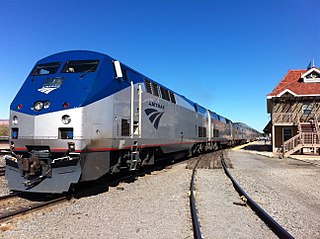
Public transportation in the United States refers to publicly financed mass transit services across the nation. This includes various forms of bus, rail, ferry, and sometimes, airline services. Most established public transit systems are located in central, urban areas where there is enough density and public demand to require public transportation. In more auto-centric suburban localities, public transit is normally, but not always, less frequent and less common. Most public transit services in the United States are either national, regional/commuter, or local, depending on the type of service. Furthermore, sometimes "public transportation" in the United States is an umbrella term used synonymous with "alternative transportation", meaning any form of mobility that excludes driving alone by automobile. This can sometimes include carpooling, vanpooling, on-demand mobility, infrastructure that is fixated toward bicycles, and paratransit service.
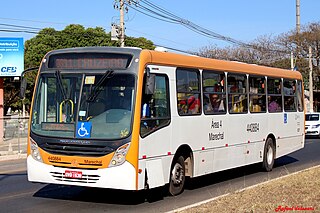
Public transport is a system of transport for passengers by group travel systems available for use by the general public unlike private transport, typically managed on a schedule, operated on established routes, and that charge a posted fee for each trip. There is no rigid definition; Encyclopædia Britannica specifies that public transportation is within urban areas, and air travel is often not thought of when discussing public transport—dictionaries use wording like "buses, trains, etc.", and UK government COVID-19 guidance lists operators with no mention of air travel.

An intercity bus driver is a bus driver whose duties involve driving a bus between cities. It is one of four common positions available to those capable of driving buses. Intercity bus drivers may be employed for public or private companies. It varies by country which is more common. But many countries have regulations on the training and certification requirements and the hours of intercity drivers.

Metro Busway is a system of bus rapid transit (BRT) routes that operate primarily along exclusive or semi-exclusive roadways known locally as a busway or transitway. There are currently two lines in the system, the G Line in the San Fernando Valley, and the J Line between El Monte, Downtown Los Angeles and Gardena, with some trips continuing to San Pedro. The Los Angeles County Metropolitan Transportation Authority (Metro) operates the system.













